

| Online: | |
| Visits: | |
| Stories: |

| Story Views |
|
| Now: | |
| Last Hour: | |
| Last 24 Hours: | |
| Total: | |
New World Order of the Knights of the Garter – the Last Leg of the March to Tyranny
The New World Order of the Knights of the Garter
The Last Leg of the March to Tyranny
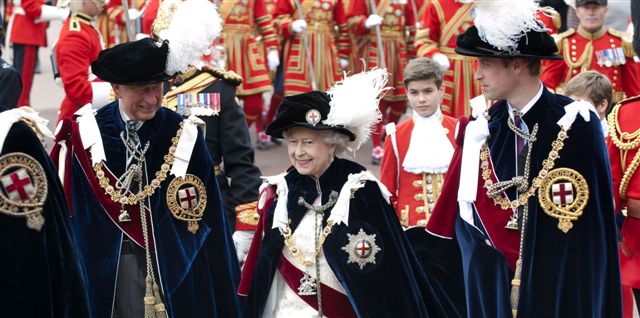


The Most Noble Order of the Garter
Heads Up for Monday, 18 June 2018 – Garter Day!
Extra Special this year perhaps as the Queen double-booked her calendar last year and the 2017 Order of the Garter cermony for the MOST PRESTIGIOUS British Order of Chivalry had to be cancelled?!
As Garter Day is nearly upon us I thought it may be worth asking you to look into the history and background of this most prestigious Order of Chivalry from a slightly different perspective.
Chapter 1 – The Enigma
French Maxim
‘Honi Soit Qui Mal Y Pense’ - ‘Shamed be [he] who evil of it thinks’.
What does ‘it’ refer to and why the ‘Garter’ reference?
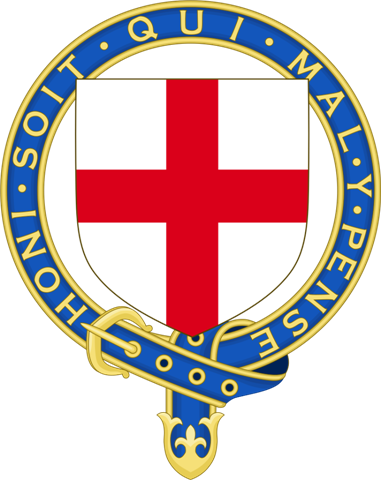
Fig 1: Most Noble Order of the Garter – established 1348
Enigmatically, the motto is also associated with the following:
- It is incorporated in the coat of arms of the Basilica of Saint Paul Outside the Walls in Rome[1]
- It is on the coat of arms above the lower main gate of the castle of the German city of Tübingen.
- It appears on the coat of arms of the Elector of Saxony in Stolpen, Germany (dated 1673).
- It is on the coat of arms for Heidelberg Castle, Germany (dated 1683).
- It appears in the source code for Apollo 11 [2]
- It appears in the comments of the source code for the master ignition routine of the Apollo 13 lunar module [3]
- It appears on American Tax Stamps circa 1765 [4]
- Until 1997 it appeared prominently on Hong Kong banknotes
- It appears in the staff used by the Usher of the Black Rod of the Parliament of Canada.
- It appears on the Royal Coat of Arms of the British East India Company[5]
- It appears on pre-revolution Cuban Cigar Bands
- It appears on the front cover of the British Passport
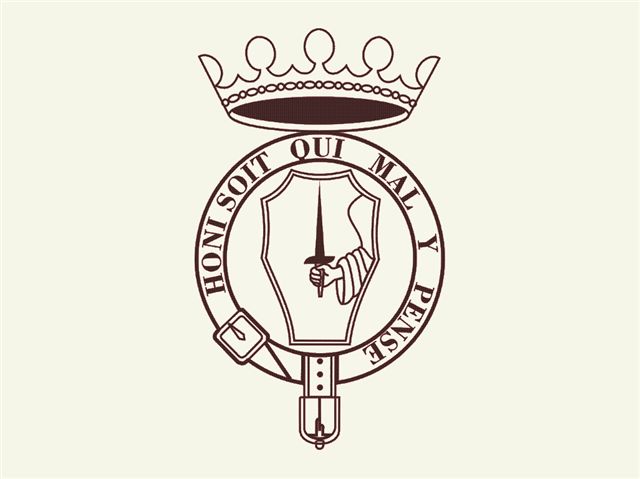
Fig 2: Abbazia di San Paolo fuori le Mura (Abbey of St. Paul Outside the Walls, Rome)
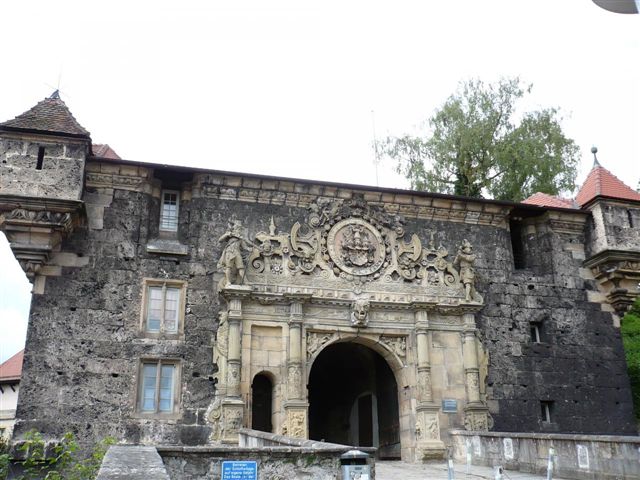
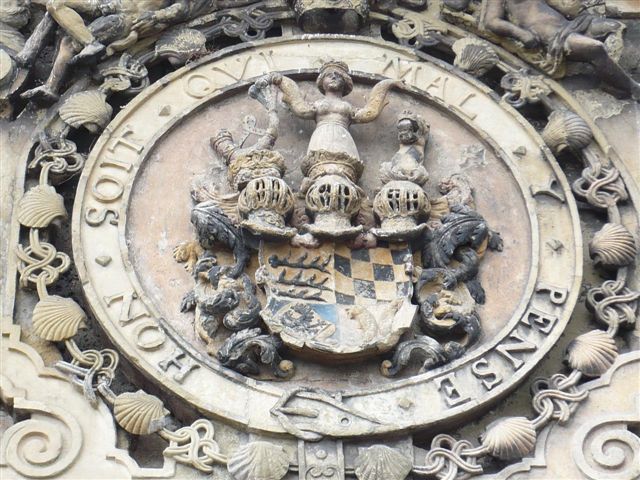
Figures 3 & 4: Le Schloss Hohentübingen (near Stuttgart, Germany)
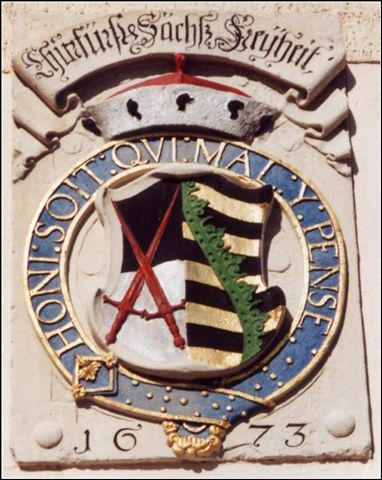
Fig 5: Coat of Arms of the Elector of Saxony in Stolpen, Germany – over the entrance to the Electoral Amtshaus [13]
Fig 6: Coat of Arms for Heidelberg Castle, Germany (dated 1683).
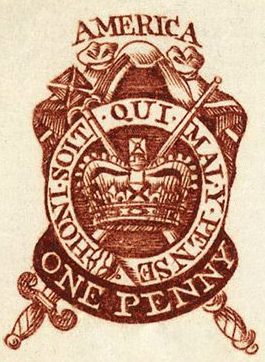
Fig 7: American Tax Stamp – circa 1765 [4]
The American Stamp Act was enacted on November 1, 1765 and repealed in March 1766.
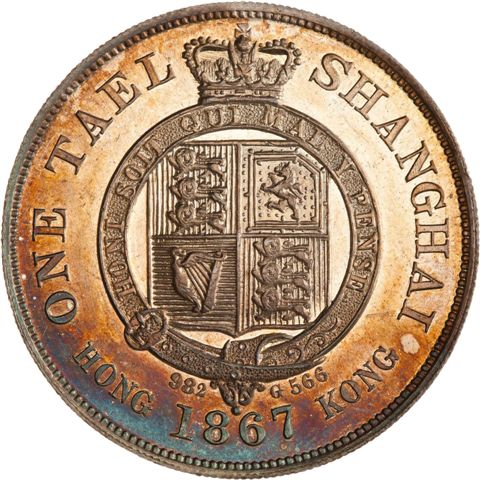
Fig 9: Hong Kong Coinage – the Tael (1867)
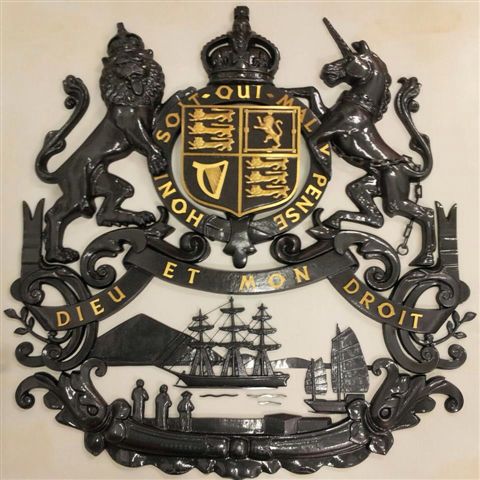
Fig 10: Colonial Coat of Arms – British Hong Kong
Fig 11: Royal Coat of Arms of the British East India Company – Penang Museum, Malaysia [5]

Fig 12: Pre- Revolution Cuban Cigar Band
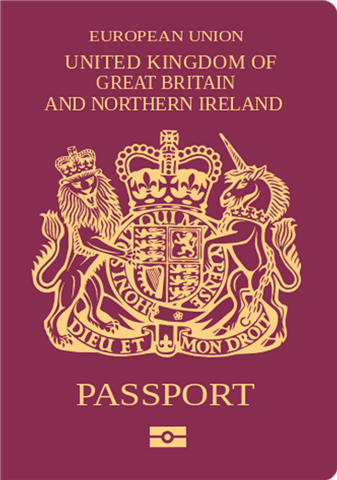
Fig 13: British Passport
Chapter 2 – The Origins of the Order
List of Founder Knights
At the time of its foundation, the Order consisted of King Edward III, together with 25 Founder Knights, listed in ascending order of stall number in St George’s Chapel:-
King Edward III (1312–77)
Edward, the Black Prince, Prince of Wales (1330–76)
Henry of Grosmont, Earl of Lancaster (c. 1310–61)
Thomas de Beauchamp, 11th Earl of Warwick (d. 1369)
Jean de Grailly, Captal de Buch (d. 1377)
Ralph de Stafford, 1st Earl of Stafford (1301–72)
William de Montacute, 2nd Earl of Salisbury (1328–97)
Roger Mortimer, 2nd Earl of March (1328–60)
John de Lisle, 2nd Baron Lisle (1318–56)
Bartholomew de Burghersh, 2nd Baron Burghersh (d. 1369)
John de Beauchamp, 1st Baron Beauchamp (d. 1360)
John de Mohun, 2nd Baron Mohun (c. 1320–76)
Sir Hugh de Courtenay (d. 1349)
Thomas Holland, 1st Earl of Kent (1314–1360)
John de Grey, 1st Baron Grey de Rotherfield (c. 1300–59)
Sir Richard Fitz-Simon (b. 1295)
Sir Miles Stapleton (d. 1364)
Sir Thomas Wale (d. 1352)
Sir Hugh Wrottesley (d. 1381)
Sir Nele Loring (d. 1386)
Sir John Chandos (d. 1369)
Sir James Audley (d. 1369)
Sir Otho Holand (d. 1359)
Sir Henry Eam (d. before 1360)
Sir Sanchet D’Abrichecourt (d. 1345)[3]
Sir Walter Paveley (d. 1375)
They are all depicted in individual portraits in the Bruges Garter Book made c. 1431, and now in the British Library.

Fig 14: Edward of Woodstock (1330-1376), the Black Prince of Wales, a Founder Member of the Knights of the Garter (William Bruges’s Garter Book c1430-40).
Note the Double Headed Eagle – a symbol of the Holy Roman Empire.
Edward of Woodstock was the first Duke of Cornwall (from 1337), the Prince of Wales (from 1343) and the Prince of Aquitaine (1362–72). In 1348 he was made a Founding Knight of the Garter. Born 15 June 1330 Woodstock Palace, Oxfordshire.
Chapter 3 – Other Notable Members
Fig 15: John Churchill, 1st Duke of Marlborough atop the Column of Victory at Blenheim Palace, Woodstock, Oxford dressed as a Roman General, eagles at his feet and a Winged Victory in his hand (monument completed 1730)
John Churchill (1650 – 1722), 1st Duke of Marlborough, 1st Prince of Mindelheim, 1st Count of Nellenburg, Prince of the Holy Roman Empire, Knight of the Order of the Garter, PC.
Prime Minister Sir Winston Churchill, his descendant and biographer.


Figures 16 & 17: Winston Churchill (1874 – 1965) – Knight of the Order of the Garter. Born Blenheim Palace, Woodstock, Oxford.
Fig 18: Duke of Marlborough Coat of Arms, Blenheim Palace, Woodstock, Oxford.
Displaying the Order of the Knight of the Garter motto – ‘Honi Soit Qui Mal Y Pense’
Note the Double Headed Eagle again – a symbol of the Holy Roman Empire.
Past Knights of the Order of the Garter also included the following Holy Roman Emperors! [6][7]:
Sigismund, Holy Roman Emperor 1368–1437
Albert V, Duke of Austria 1397–1439
Later Albert II, Holy Roman Emperor
Frederick III, Holy Roman Emperor 1415–1493
Maximilian, King of the Romans 1459–1520
Later Maximilian I, Holy Roman Emperor
Charles, Infant of Spain, Archduke of Austria and Duke of Burgundy 1500–1558
Later Charles V, Holy Roman Emperor
Ferdinand, Infant of Spain, Archduke of Austria 1503–1564
Later Ferdinand I, Holy Roman Emperor
Maximilian II, Holy Roman Emperor 1527–1576
Rudolf II, Holy Roman Emperor 1552–1612
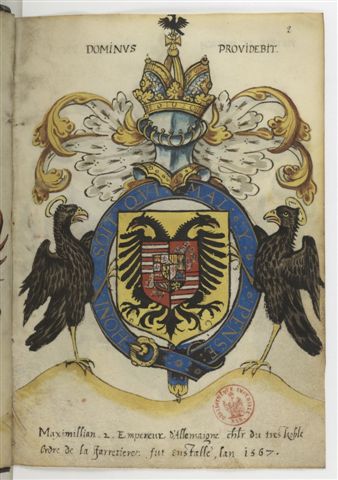
Fig 19: Coat of Arms of Maximilian II, Holy Roman Emperor (1527 – 1576)
The Most Noble Order of the Garter – an order of chivalry founded by Edward III in 1348 and regarded as the most prestigious BRITISH order of chivalry. [15]
However, since the Order’s inception in 1348 there are a surprising number of apparently ‘FOREIGN’ members?
Of the thousand or so (~1011) Knights appointed to the Order of the Garter from 1348 to 2018 [7] the following are suggested as ‘NON-BRITISH’ from the author’s perspective:
Dates shown are of nomination or installation to the Order.
John IV, Duke of Brittany 1375–1376
William I, Duke of Guelders and Jülich c.1399
William VI, Count of Holland c.1399
Albert I, Duke of Bavaria c. 1398
John I, King of Portugal c.1408
Eric VII, King of Denmark, Sweden and Norway c.1405
Philip III, Duke of Burgundy 1422
Infante Peter, Duke of Coimbra 1427
Edward, King of Portugal 1435
Gaston de Foix, Captal de Buch 1438–1439
Henry, Duke of Viseu 1442–1443
Álvaro Vaz de Almada, 1st Count of Avranches 1445
Afonso V, King of Portugal 1447
Alfonso V, King of Aragon and Naples 1450
William, Duke of Brunswick 1450
Casimir IV, King of Poland 1450
Ferdinand I, King of Naples 1463
Francesco Sforza, Duke of Milan c.1463
Inigo d’Avalos, Count of Monteodorisio 1467
Charles, Duke of Burgundy 1470
Federico da Montefeltro, Duke of Urbino 1474
Ferdinand II, King of Aragon and Castile 1480
(Ferdinand II (1452 –1516), called the Catholic, was King of Sicily
from 1468 and King of Aragon from 1479 until his death).
Hercules d’Este, Duke of Modena and Ferrara 1480
John II, King of Portugal 1482
Alfonso, Duke of Calabria 1493
John, King of Denmark, Sweden and Norway c.1499
Philip, Archduke of Austria and Duke of Burgundy c.1503
Guidobaldo da Montefeltro, Duke of Urbino c.1504
Manuel I, King of Portugal 1510
Giuliano de Medici, Duc de Nemours 1514
Francis I, King of France 1527
Anne de Montmorency, Duc de Montmorency 1532
Philip de Chabot, Comte de Neublanche 1532
Henry II, King of France 1551
Prince Philip of Spain 1554
Emmanuel Philibert, Duke of Savoy 1554
Adolf, Duke of Holstein-Gottorp 1560
Charles IX, King of France 1564
Francis, Duc de Montmorency 1572
Henry III, King of France 1575
(King of Poland 1573–1574)
Frederick II, King of Denmark and Norway 1578
Johann Casimir of the Palatinate-Simmern 1579
Henry IV, King of France 1590
Frederick I, Duke of Württemberg 1597
Christian IV, King of Denmark and Norway 1603
Ulrich, Duke of Holstein 1605
Frederick V, Elector Palatine 1612
(King of Bohemia from 1619 to 1620)
Maurice de Nassau 1612
(Later Maurice, Prince of Orange)
Christian, Duke of Brunswick-Wolfenbüttel 1624
Claude de Lorraine, Duc de Chevreuse 1625
Gustavus Adolphus, King of Sweden 1627
Frederick Henry, Prince of Orange 1627
Charles I Louis, Elector Palatine 1633
Prince Rupert of the Rhine 1642
William II, Prince of Orange 1645
Bernard de Nogaret de Foix, Duc d’Épernon 1645
Prince Maurice of the Rhine 1649
Edward, Count Palatine of Simmern 1649
Henri de la Trémoille, Prince de Taranto 1653
William III, Prince of Orange 1653
Frederick William I, Elector of Brandenburg 1654
John Gaspar Ferdinand de Marchin, Comte de Granville 1658
Christian, Prince Royal of Denmark 1662
(Later Christian V, King of Denmark and Norway)
Charles XI, King of Sweden 1668
John George II, Elector of Saxony 1668
Charles II, Elector Palatine 1680
Prince George of Denmark 1684
Frederic Herman de Schomberg, 1st Duke of Schomberg 1689
Frederick III, Elector of Brandenburg 1690
(Later Frederick I, King in Prussia)
George William, Duke of Brunswick-Lüneburg 1690
John George IV, Elector of Saxony 1692
George Louis, Elector of Hanover 1701
Meinhardt Schomberg, 3rd Duke of Schomberg 1703
Prince George Augustus of Brunswick-Lüneburg 1706
(Later Prince of Wales; George II, King of Great Britain)
Prince Frederick Lewis of Brunswick-Lüneburg 1717
(Later Prince of Wales)
Prince Ernest Augustus of Brunswick-Lüneburg 1717
(Later Duke of York and Albany)
William IV, Prince of Orange 1733
Frederick, Landgrave of Hesse-Kassel 1741
Frederick III, Duke of Saxe-Gotha-Altenburg 1741
Johann Adolf II, Duke of Saxe-Weissenfels 1745
Charles William Frederick, Margrave of Brandenburg-Ansbach 1749
William V, Prince of Orange 1752
Ferdinand, Prince of Brunswick-Bevern 1759
Adolphus Frederick IV, Duke of Mecklenburg-Strelitz 1764
Charles William Ferdinand, Hereditary Prince of Brunswick-Wolfenbüttel 1765
Prince Ernest Augustus 1786
(Royal Knight; later King of Hanover)
William IX, Landgrave of Hesse-Kassel 1786
Ernest II, Duke of Saxe-Gotha-Altenburg 1790
Alexander I, Emperor and Autocrat of all the Russias 1813
Louis XVIII, King of France 1814
Francis I, Emperor of Austria 1814
Frederick William III, King of Prussia 1814
Ferdinand VII, King of Spain 1814
William VI, Prince of Orange 1814
(Later William I, King of the Netherlands)
Leopold George Frederick, Duke of Saxe-Coburg-Saalfeld 1816
(Later Léopold I, King of the Belgians)
Frederick VI, King of Denmark 1822
John VI, King of Portugal 1822
Charles X, King of France 1825
Nicholas I, Emperor and Autocrat of all the Russias 1827
Bernhard II, Duke of Saxe-Meiningen 1830
William I, King of Württemberg 1830
Augustus William Maximilian Frederick Lewis, 1831
(Duke of Brunswick-Wolfenbüttel)
Carl, 3rd Prince of Leiningen 1837
Ernest I, Duke of Saxe-Coburg and Gotha 1838
Prince Albert of Saxe-Coburg-Gotha 1839
(Later Albert, Prince Consort)
Frederick William IV, King of Prussia 1842
Frederick Augustus II, King of Saxony 1842
Louis Philippe, King of the French 1844
Ernest II, Duke of Saxe-Coburg and Gotha 1844
Napoleon III, Emperor of the French 1855
Victor Emmanuel II, King of Sardinia 1855
(Later Victor Emmanuel II, King of Italy)
Abdul Medjid I, Sultan of Ottoman Empire 1856
(First non-Christian member)
Frederick William Nicholas Charles, Crown Prince of Prussia 1858
(Later Frederick III, Emperor of Germany)
Peter V, King of Portugal 1858
William I, King of Prussia 1861
(Later German Emperor)
Prince Louis of Hesse and the Rhine 1862
(Later Louis IV, Grand Duke of Hesse)
Frederick William, Grand Duke of Mecklenburg-Strelitz 1862
Louis I, King of Portugal 1865
Christian IX, King of Denmark 1865
Louis III, Grand Duke of Hesse and the Rhine 1865
Leopold II, King of the Belgians 1866
Prince Christian of Schleswig-Holstein 1866
Franz Joseph, Emperor of Austria 1867
Alexander II, Emperor and Autocrat of all the Russias 1867
Abdul Aziz, Sultan of Ottoman Empire 1867
Prince Leopold 1869
(Later Duke of Albany)
Peter II, Emperor of Brazil 1871
(First non-European member)
Naser al-Din, Shah of Persia 1873
George I, King of the Hellenes 1876
Prince Wilhelm of Prussia 1877
(Later Wilhelm II, Emperor of Germany)
Umberto, King of Italy 1878
Ernst August of Hanover, 3rd Duke of Cumberland and Teviotdale 1878
Alexander III, Emperor and Autocrat of all the Russias 1881
Oscar II, King of Sweden and Norway 1881
Alfonso XII, King of Spain 1881
Albert, King of Saxony 1882
William III, King of the Netherlands 1882
Prince Henry of Battenberg 1885
Rudolf, Crown Prince of Austria 1887
Prince Henry of Prussia 1889
Charles, King of Württemberg 1890
Victor Emmanuel, Prince of Naples 1891
(Later Victor Emmanuel III, King of Italy)
Prince Ernest Ludwig of Hesse 1892
Carol, King of Romania 1892
Grand Duke Nicholas Alexandrovich of Russia 1893
(Later Nicholas II, Emperor and Autocrat of all the Russias)
Prince Alfred of Edinburgh, 1894
(also Hereditary Prince of Saxe-Coburg and Gotha)
Charles I, King of Portugal 1895
Crown Prince Frederick of Denmark 1896
(Later Frederick VIII, King of Denmark)
Frederick William Victor Augustus Ernest 1901
(Crown Prince Imperial of Germany)
Alfonso XIII, King of Spain 1902
Grand Duke Michael Alexandrovich of Russia 1902
Archduke Franz Ferdinand of Austria 1902
Prince Emanuel Philibert of Savoy, Duke of Aosta 1902
Luís Filipe, Prince Royal of Portugal 1902
Prince Charles Edward, Duke of Albany 1902
(also Duke of Saxe-Coburg and Gotha)
Muzaffir al-Din, Shah of Persia 1903
Wilhelm II, King of Württemberg 1904
Gustav, Crown Prince of Sweden 1905
(Later Gustav V, King of Sweden)
Mutsuhito, Emperor of Japan 1905
Frederick I, Grand Duke of Baden 1906
Haakon VII, King of Norway 1906
Manuel II, King of Portugal 1909
Luitpold, Prince Regent of Bavaria 1911
Adolf Frederick V, Grand Duke of Mecklenburg-Strelitz 1911
Yoshihito, Emperor of Japan 1912
Christian X, King of Denmark 1914
Albert I, King of the Belgians 1914
Ferdinand, King of Romania 1924
Hirohito, Emperor of Japan 1929
Leopold III, King of the Belgians 1935
George II, King of the Hellenes 1938
Carol II, King of Romania 1938
Prince Paul of Yugoslavia 1939
Wilhelmina, Queen of the Netherlands 1944
Frederick IX, King of Denmark 1951
Gustaf VI Adolf, King of Sweden 1954
Haile Selassie, Emperor of Ethiopia 1954
Juliana, Queen of the Netherlands 1958
Olav V, King of Norway 1959
Baudouin, King of the Belgians 1963
Paul, King of the Hellenes 1963
Jean, Grand Duke of Luxembourg 1972
Margrethe II, Queen of Denmark 1979
Carl XVI Gustaf, King of Sweden 1983
Juan Carlos, King of Spain 1988
Beatrix, Queen of the Netherlands 1989
Akihito, Emperor of Japan 1998
Harald V, King of Norway 2001
Felipe VI, King of Spain 2017
Chapter 4 – Why the Order of the ‘Garter’?
The Official Narrative:-
Various legends account for the origin of the Order. The most popular involves the “Countess of Salisbury”, whose garter is said to have slipped from her leg while she was dancing at a court ball at Calais. When the surrounding courtiers sniggered, the king picked it up and returned it to her, exclaiming,
“Honi soit qui mal y pense!”
(“Shame on him who thinks ill of it!”), the phrase that has become the motto of the Order.
According to another legend, King Richard I was inspired in the 12th century by St George the Martyr while fighting in the Crusades to tie garters around the legs of his knights, who subsequently won the battle. King Edward supposedly recalled the event in the 14th century when he founded the Order.
For what its worth, both of the above explanations are quite ‘lame’ for such a prestigious Order of Knights (in the author’s opinion).
A More Plausible Explanation?
The ‘Order of the Garter’ associated with the ‘Leg of Italy’
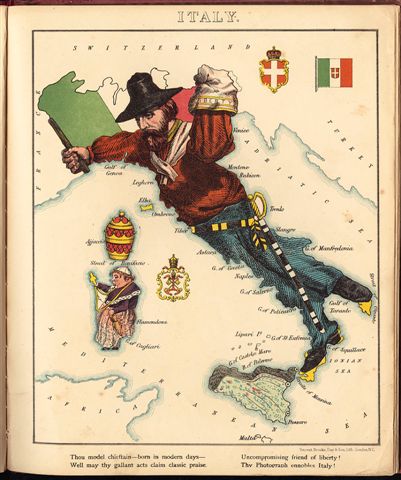
Fig 20: The Mezzogiorno: Old Boot of Italy, featuring Garibaldi, 1868
Giuseppe Garibaldi (1807 – 1882) was an Italian general, politician, nationalist and Freemason.
Figs 21 and 22: Coat of Arms on Display at Chirk Castle, North Wales and a Cloister Roof Boss at Christ Church College, Oxford
Figs 23 and 24: Coats of Arms at the Main Gate for Hawarden Castle, North Wales, former residence of Sir William Gladstone (1925 – 2018), 7th Baronet, Knight of the Order of the Garter
The ‘Leg of Italy’ to be found in the cloister roof bosses, Christ Church College, Oxford, on one of the coats of arms on display at Chirk Castle, North Wales and displayed on both coats of arms at the main gate for Hawarden Castle, North Wales.
Chapter 5 – The Duke of Wellington
Knight of the Garter (KG)
Arthur Wellesley, 1st Duke of Wellington, KG, GCB, GCH, PC, FRS (1 May 1769 – 14 September 1852), was an Anglo-Irish soldier and statesman who was one of the leading military and political figures of 19th-century Britain, serving twice as Prime Minister. His defeat of Napoleon at the Battle of Waterloo in 1815 puts him in the first rank of Britain’s military heroes.

Fig 25: Arthur Wellesley (1769 – 1852), 1st Duke of Wellington KG
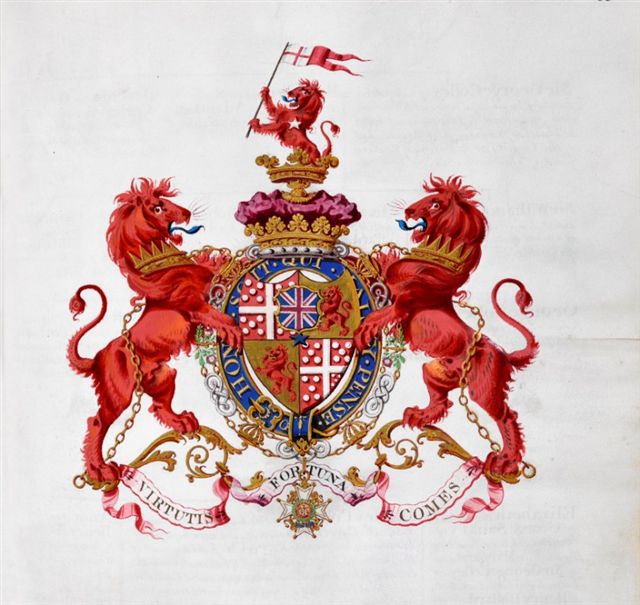
Fig 26: Coat of Arms of Arthur Wellesley (1769 – 1852), 1st Duke of Wellington [8] showing the motto for the Order of the Garter.
Fig 27: Duke of Wellington Battle Standard – St Pauls Cathedral Crypt, London
Note the Double Headed Eagle of the Holy Roman Empire again.
An interesting side note is that Arthur Wellesley had strong connections with Freemasonry – both his father and his brother served as Masters and they both became Grand Masters of the Grand Lodge of Ireland. [9]
Arthur himself was initiated into Trim Lodge (no 494), Ireland at the age of 21. [9]
Arthur Wellesley was created Marquis of Wellington on 18 August 1812 and was appointed Knight of the Order of the Garter on 4th March 1813. [10]
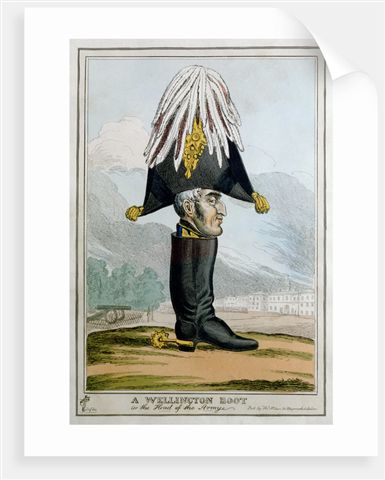
Fig 28: Caricature of the Duke of Wellington as a Wellington Boot (circa 1830)
Is this a humorous association of the ‘Order of the Garter’ with the ‘Leg of Italy’ for those in the cognoscenti?
Chapter 6 – The Triskelion
Everyone knows that standing on one leg can be a little unbalanced but what if stabilizers are added.

Fig 29: Flag of Sicily – the Triskelion is an ancient symbol of Sicily
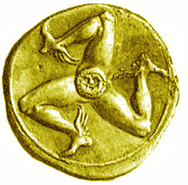
Fig 30: Sicilian Coinage.

Fig 31: Note the proximity of Sicily to Italy
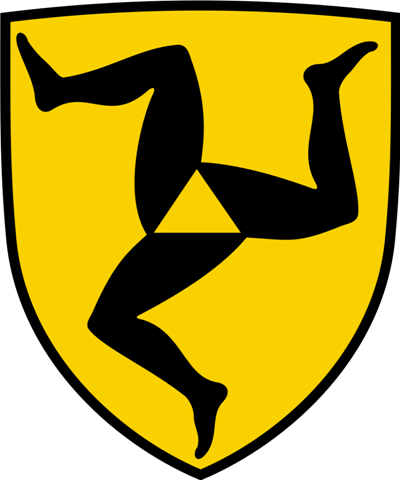
Fig 32: Coat of arms of the city of Füssen, Bavaria, Germany
The German name Füssen literally translates to ‘Feet’.
Füssen was settled in Roman times, on the Via Claudia Augusta, a road that leads southwards to northern Italy and northwards to Augusta Vindelicum (today’s Augsburg), the former regional capital of the Roman province Raetia.
In late antiquity, Füssen was the home of a part of the Legio III Italica, which was stationed there to guard the important trade route over the Alps.
Legio Tertia Italica (“Italian Third Legion”) was a legion of the Imperial Roman army founded in AD 165 by the emperor Marcus Aurelius (r. 161-80), for his campaign against the Marcomanni tribe. The cognomen Italica suggests that the legion’s original recruits were mainly drawn from Italy. The legion was still active in Raetia and other provinces in the early 5th century (Notitia Dignitatum, dated ca. 420 AD for Western Roman Empire entries). [14]
Then there is the symbol for the Isle of Man – the difference being that the legs are now armoured.
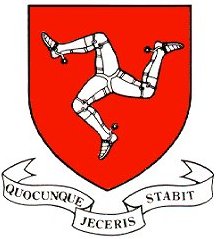
Fig 33: Isle of Man Symbol
The motto is ‘Quocunque Jeceris Stabit’, which is Latin and means: “whichever way you shall have thrown [it], it shall stand”
The Manx triskelion is known in the Manx language as tre cassyn “the three legs”. The symbol has been associated with the island since at least the 13th century. [11][12]
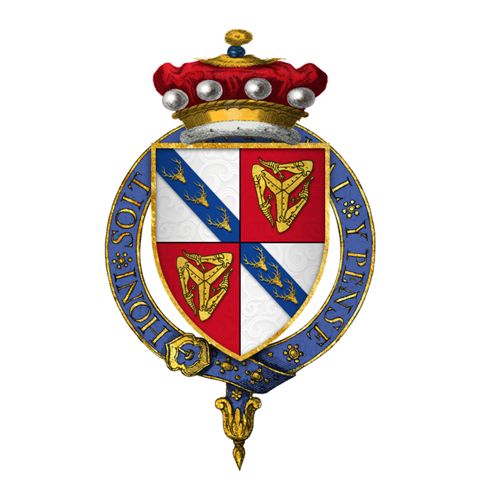
Fig 34: Coat of Arms for Sir John Stanley I, KG (c. 1350–1414) incorporating the Order of the Garter and the Triskelion.
Sir John Stanley I, KG (c. 1350–1414) was Lord Lieutenant of Ireland and titular King of Mann, the first of that name. The Stanley family later became the Earls of Derby and remained prominent in English history into modern times.
The author also came across the Triskelion on a monument in an old Scottish town on the River Tay – Dunkeld (once the capital of Scotland!).
The monument features both the ‘Compass and Squares’ of the Freemasons and the Triskelion?
Figures 35 and 36: Dunkeld Monument, Scotland featuring both the Compass and Squares of the Freemasons and the Triskelion
Fig 37: Dunkeld Monument, Scotland featuring both the Compass and Squares of the Freemasons and the Triskelion
Dunkeld is located approximately 14 miles NNW of Perth in Scotland.
Modern Perth is situated 3km downstream (on the River Tay) of the original Roman fort of Bertha. Bertha/Perth was the limit of the Roman Empire in Britain; the Romans never defeated the Picts at Scone (pronounced Scoon), the ancient capital of Scotland, only two miles north of Perth.
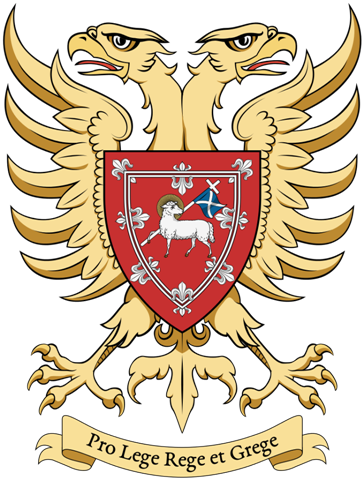
Fig 38: Modern Coat of Arms of Perth, Scotland featuring the Double-Headed Eagle of the Holy Roman Empire
Could the armoured legs of the Triskelion be stabilisers for the ‘Leg of Italy’ and the Holy Roman Empire?
Fig 39: Statue of Richard, Second Marquis of Westminster (1795 – 1869), Knight of the Order of the Garter, Chester, UK
Fig 40: Detail of the Garter Robes from the Statue of Richard, Second Marquis of Westminster (1795 – 1869), Chester, UK
Fig 41: Signs on Bishop Lloyds Palace, Watergate Street, Chester, UK (carvings dated to 1615).
Signs include the Order of the Garter, the Triskelion, the Cross of St George and the Double Headed Eagle of the Holy Roman Empire.
Is the ‘Leg of Italy’ and the ‘Order of the Garter’ connected to anything else?
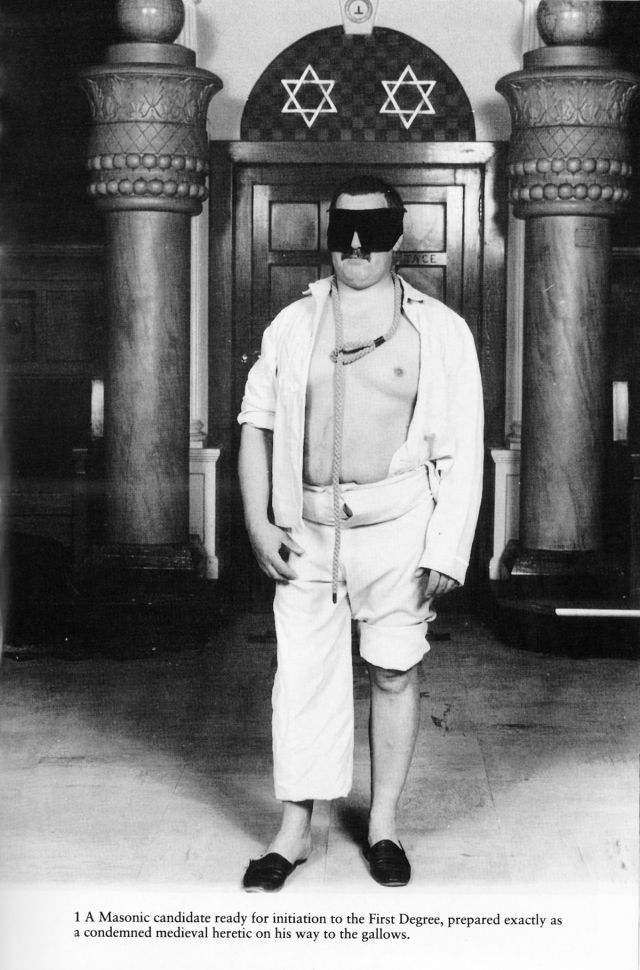
Fig 42: Freemasonic Initiation Rite for the First Degree – the First Step
*******************************************************************
Is the ‘New World Order’ the Holy Roman Empire Re-Incarnated?
(Like the Phoenix from the Ashes)
https://pubastrology.com/the-emperors-new-clothes/
*******************************************************************
References
[1] http://www.abbaziasanpaolo.org/stemma-abbazia-san-paolo-fuori-le-mura/
[3] http://www.ibiblio.org/apollo/listings/Luminary131/BURN_BABY_BURN–MASTER_IGNITION_ROUTINE.agc.html
[4] https://carynschulenberg.com/2015/11/the-stamp-act/
[5} http://theearlymalaydoctors.blogspot.co.uk/2012_06_03_archive.html
[6] http://www.heraldica.org/topics/orders/garterlist.htm
[7] https://en.wikipedia.org/wiki/List_of_Knights_and_Ladies_of_the_Garter
[8] http://www.college-of-arms.gov.uk/news-grants/news/item/113-waterloo-and-wellington
[10] http://www.historyhome.co.uk/pms/wellingt.htm
[11] www.gov.im
[12] https://simple.wikipedia.org/wiki/Coat_of_arms_of_the_Isle_of_Man
[13] https://commons.wikimedia.org/wiki/File:Stolpen_Amtshaus_(2)_2006-06-09.jpg
[14] https://en.m.wikipedia.org/wiki/Legio_III_Italica
[15] https://en.wikipedia.org/wiki/Order_of_the_Garter
Addendum Foot Note
Modern Cultural References – Sir Rolf Harris?
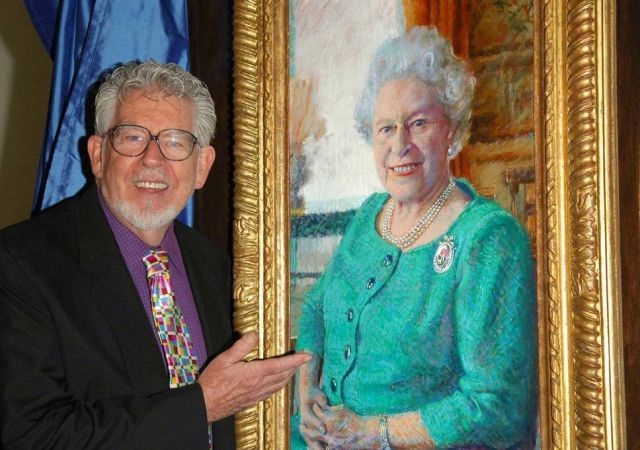
Fig 43: Sir Rolf Harris with his Portrait of the Queen
N.B. One of Queen Elizabeth II’s honorary titles – Princess of the Holy Roman Empire.
Ref http://www.holyromanempireassociation.com
Was Rolf Harris referring to the Triskelion when he sang about ‘Jake the Peg with the Extra Leg’?


Fig 44: Record Cover for ‘Jake the Peg’ (with the Extra Leg) by Rolf Harris
On a similar theme, was Rolf referring to the Knights Templars when he sang about ‘Two Little Boys’?
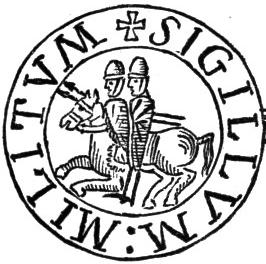
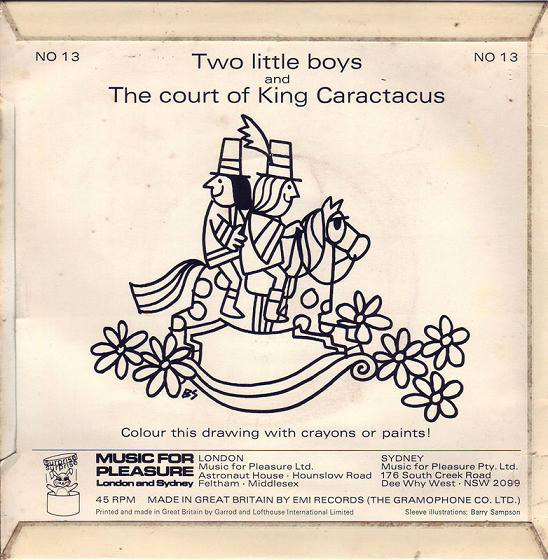
Fig 45: One of the Logo’s associated with the Knight’s Templar
Other Articles in this Series
The Emperor’s New Clothes
An alternative interpretation of the classic Hans Christian Andersen tale.
https://pubastrology.com/the-emperors-new-clothes/
The Spirit World – Pub Astrology
The origins of Olde English and Welsh pub names from the 17th century onwards.
PDF versions of these books available for download from:



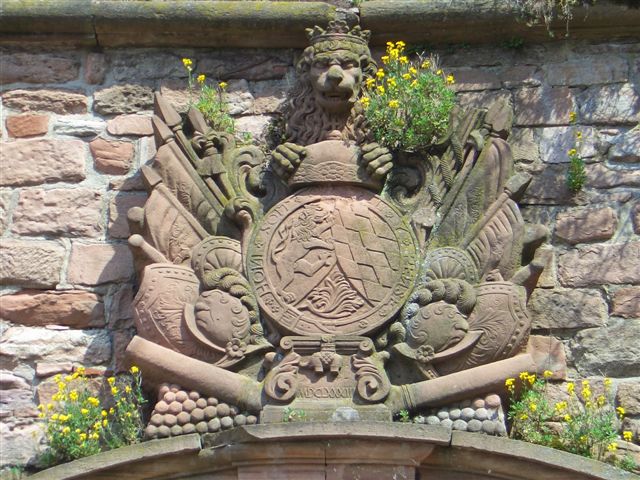

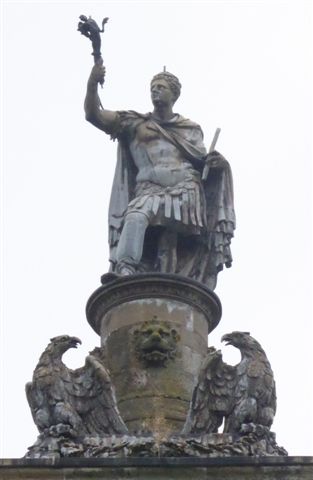
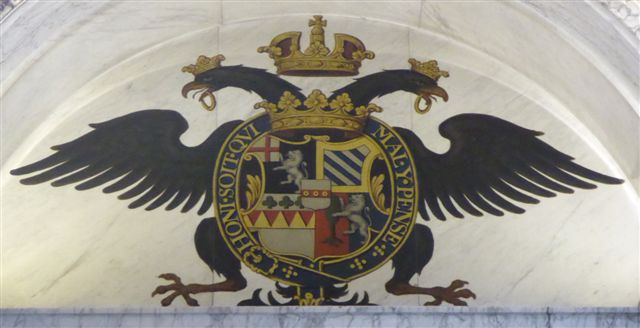




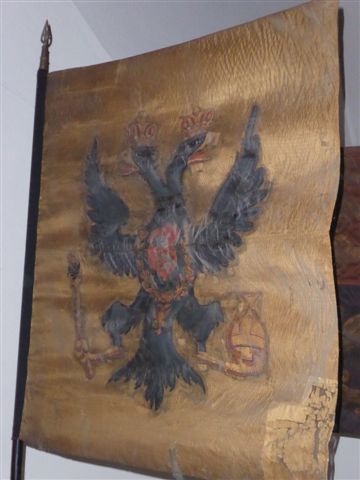
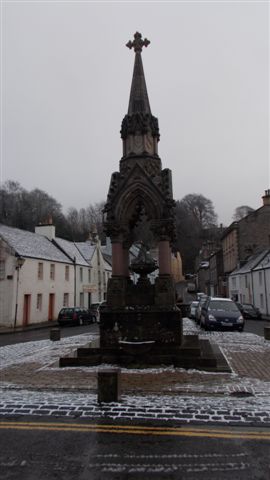


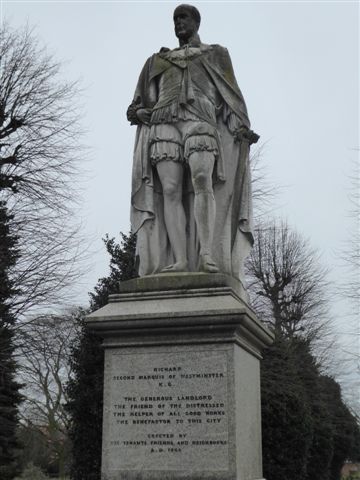
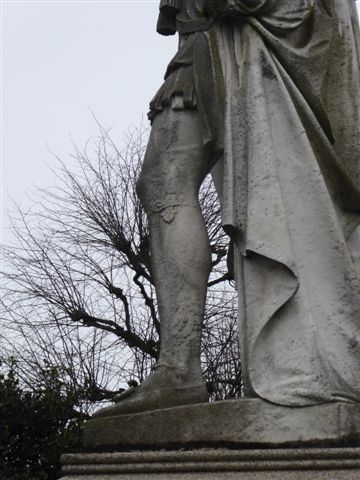
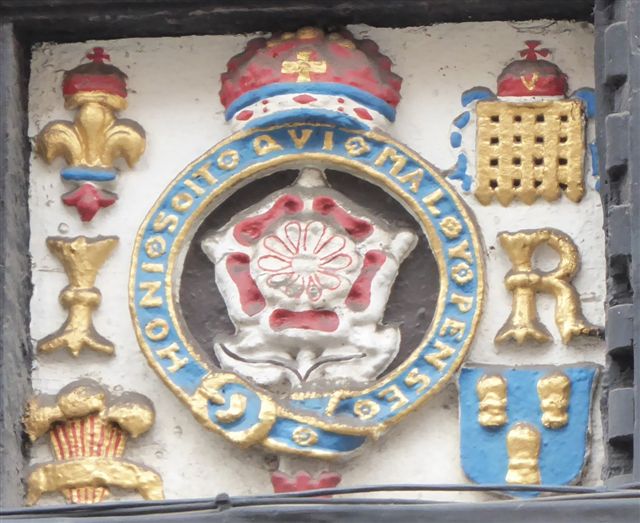
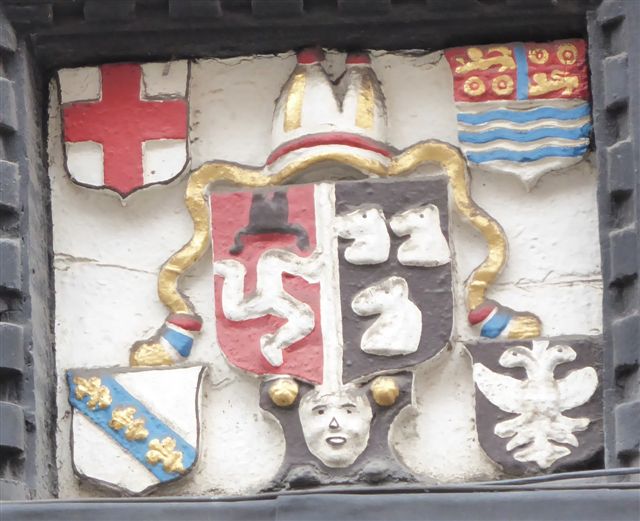

Britain has defeated every country in the world at war

 do some research…
do some research…
royalty and nobility (“Kings and Queens”) had blue blood
England, Spanish, Netherlands, More
Heads up – BIN has been censoring nearly all comments to the article linked below – apparently too much TRUTH for the people to know!
The Final Warning – This is why WW3 Must Take Place!!
After reading through all 20 pages of this story and checking out many of the links, I think Dan Raleigh may be on to something BIG here – perhaps the BIGGEST story of our age! The best and the brightest would do well to research this INCREDIBLE STORY!
- http://beforeitsnews.com/alternative/2018/05/the-final-warning-this-is-why-ww3-must-take-place-3614999.html
Message from the controllers, No matter how evil don’t let you mind go there slave. We give the USA controllers this message. You die slowly enough you will live long enough to regret everything you have ever done.
The motto ‘Honi Soit Qui Mal Y Pense’ – ‘Shamed be [he] who evil of it thinks’. is not evil in itself because it’s claim is against “sinful though”.
There has been misappropriation of just phrases since the beginning. This is what the devil does best: to usurp a just formula.